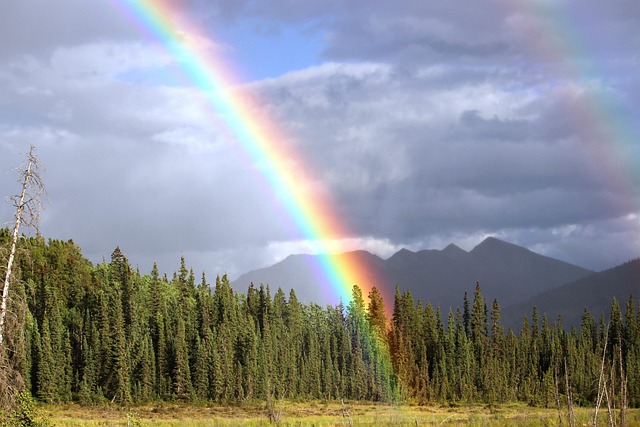Exploring the Spiritual Symbolism of Rainbow Churches in Religious Traditions
In a world increasingly defined by its diversity, the concept of a rainbow church evokes a sense of unity and inclusion within various religious traditions. The imagery of a rainbow, which is often seen as a bridge between the divine and humanity, symbolizes hope, promise, and the coming together of different communities. As societies evolve, so do the expressions of spirituality, leading to the emergence of churches that celebrate this spectrum of beliefs and identities.
Historically, rainbows have held significant meanings across many cultures and religions. In Christianity, for example, the rainbow is considered a symbol of God’s covenant with Noah, serving as a promise that He would never again flood the Earth. This enduring symbol of hope resonates deeply within rainbow churches, which strive to embody the message that love and acceptance transcend differences. The vivid colors of the rainbow represent not only the diversity of the human experience but also the beauty that comes from embracing that diversity in faith.
Rainbow churches often extend their arms wide to welcome people from all walks of life, including those from the LGBTQ+ community who have historically faced exclusion within mainstream religious settings. By creating spaces that affirm and celebrate different sexual orientations and identities, these churches embody the core tenets of love and acceptance that many religious texts espouse. In this way, they not only nurture spiritual growth but also foster a sense of belonging and community for individuals who may have been marginalized in other faith contexts.
Moreover, the concept of a rainbow church can also be understood through the lens of interfaith dialogue. As spirituality becomes more globalized, the ability to bridge gaps between faiths becomes increasingly important. Rainbow churches often serve as venues where different religious traditions can come together to share stories, beliefs, and practices, fostering a greater understanding of our shared humanity. This approach to spirituality encourages adherents to look beyond their own doctrines and embrace the richness that other traditions can offer.
Additionally, the visual and cultural symbolism of the rainbow has been utilized in art, music, and literature to communicate themes of unity and shared purpose. Many rainbow churches incorporate vibrant colors into their worship spaces, creating an atmosphere that invites reflection and connection among congregants. Artistic expressions within these communities often celebrate not just diversity, but the profound depth of spiritual experiences that can arise from it. From musical celebrations that blend various cultural influences to visual arts that depict shared narratives, every facet of a rainbow church is steeped in the spirit of inclusion.
As we navigate the complexities of modern religious traditions, the emergence of rainbow churches invites us to rethink our perceptions of faith and community. They challenge us to embrace a spirituality that is as varied and colorful as the human experience itself. This exploration not only expands our understanding of religious traditions but also emphasizes the harmony that can exist when we come together in our differences, fostering a world in which every individual can feel seen, valued, and loved.




